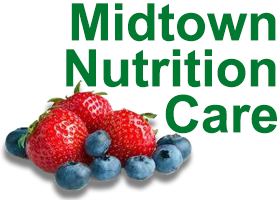HOW DOES DIET AFFECT US AS WE AGE?
The foods we choose contribute to keeping muscles, bones, organs, and other body parts strong as we age. Eating vitamin-rich foods reduces the risk of heart disease, stroke, high blood pressure, diabetes, bone loss, cancer and anemia.
HOW MUCH SHOULD YOU EAT?
According to the United States Dietary Guidelines, an average-sized sedentary woman over 50 should eat 1600 calories per day, an average-sized sedentary man between 51-60 should eat 2200 calories per day, and an average-sized sedentary man over 60 should eat 2000 calories per day. If you are active you can add between 200 to 500 calories per day, depending on whether you are moderately active or very active.
PREVENTION
Protein–Research suggests that older individuals need 1.0 to 1.5 gm/kg/day of protein over three meals a day. One way to do this is to eat 25-30 gm of protein per meal (this can be consumed as 3 ounces of chicken/fish/lean meat, or 1 cup of cottage cheese).
Water–As we age, dehydration may become a problem because our bodies lose some of their ability to regulate fluid levels, and your sense of thirst may not be as sharp as when you were younger. Try to sip water or other low-calorie beverages throughout the day and with meals to stay hydrated and avoid urinary tract infections and constipation.
Vitamin B-12–After 50, your stomach produces less gastric acid making it difficult to absorb vitamin B-12-needed to keep our blood and nerves vital. The recommended daily intake is 2.4 mcg. This amount can be obtained in meat, poultry and fish and in fortified foods or a vitamin supplement.
Calcium–For adults 50-70 years of age, the recommendation for men and women is 1,000 mg and 1,200 mg, and over 70 1,200 mg for both men and women. Milk, yogurt and cheese are good sources of calcium, as well as Chinese cabbage, kale and broccoli.
Vitamin D–We get most of our vitamin D through sun exposure and certain foods (fatty fish, egg yolk, and fortified milk). As we age, our skin becomes less efficient at synthesizing vitamin D. You may need to supplement your diet with fortified foods or a multivitamin, especially if you have limited sun exposure. Many vitamins contain 600-1,000 IU of vitamin D. At ages 51-70, aim for 600 IU, and over 70 aim for 800 IU. Low vitamin D is associated with low muscle strength.
HOW CAN I GET MOST OF THE NUTRIENTS I NEED?
The government Food Patterns suggests that people 50 or older should choose healthy foods every day from the following:
Fruits: 1.5 to 2.5 cups/day
Vegetables: 2 to 3.5 cups/day
Grains: 5 to 10 ounces/day
Protein food: 5 to 7 ounces/day.
Dairy food: 3 cups of fat free or low-fat milk/day
Oil: 5 to 8 teaspoons/day
